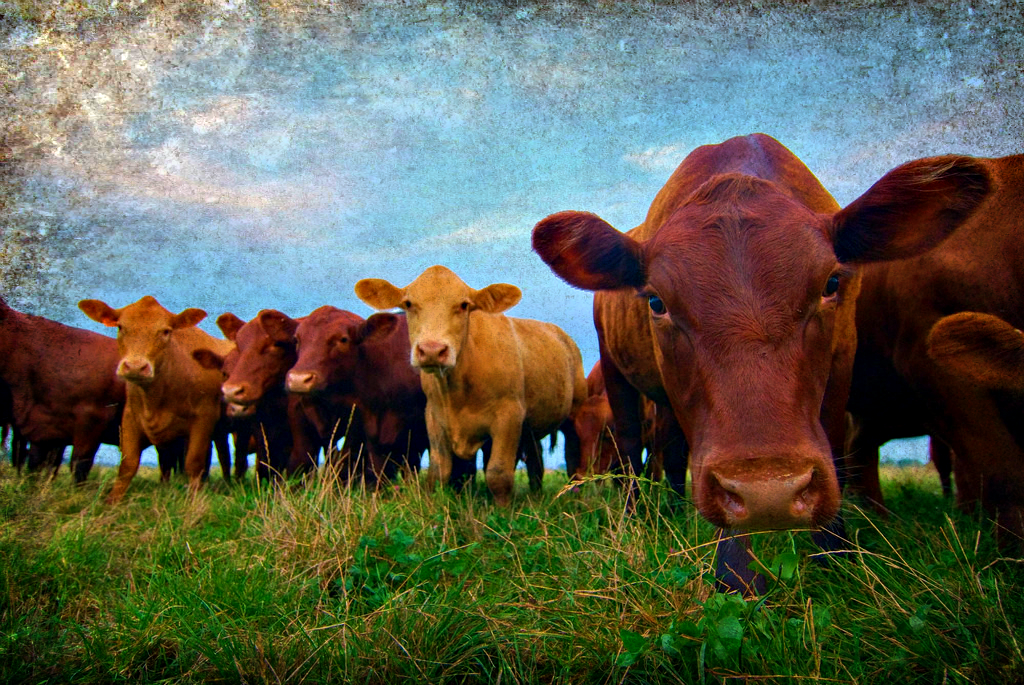
Photo Credit: U.S. Department of Agriculture
If you have scrolled through Netflix’s new releases lately, chances are you’ve heard of the documentary that is sweeping the nation, “What the Health?” It’s a documentary that attempts to expose the animal agriculture industry for perpetuating harmful diseases caused by the consumption of animal products. (https://youtu.be/Jf44vLndiRM). The film has been both praised by advocates for veganism and criticized by doctors for “cherry-picking” information. Regardless of what you thought of the film, it has contributed to the conversation about “health” with regard to animal agriculture.
According to Author Erik Marcus in his book entitled, Meat Market, between 1950 and 1980, the number of small dairy farms in the U.S. decreased from 3.65 million to 278,000. Most small pig farms have been driven out of business entirely. Currently, large industrial factory farming accounts “for 99.9% of chickens, 97% of chickens for eggs, 99% for turkeys, 95% for pigs and 78% for cattle” [1]. Small- and medium-scale livestock farms have been almost eliminated and replaced by large factory farms that contain thousands of cows, pigs, and chickens concentrated into small facilities. These facilities are known as concentrated animal feeding Operations (CAFOs). These facilities are large factory farms that mass produce animal products, and while they can often provide low-cost meat, dairy, and eggs, there are significant health risks associated with mass-industrial farming. 70% of drugs given to animals are non-therapeutic [2]which is alarming considering that the CDC reported 22% of antibiotic-resistant illness in humans are in fact linked to animal product consumption [3]. Additionally,preventable diseases such as E-coli caused by improper sanitation, and contamination are still a main concern with respect to animal agriculture [4].
Vendetta: Industry v. Consumer Health
The CAFO industry is compromising consumer health through the use of harmful antibiotics and improper waste management and sanitation for the sake of providing lower cost food. While mass production of meat and dairy products lowers costs for consumers, we must consider the long-term costs associated with the environmental and health problems associated with this production model.
The National Association of Local Boards of Health published an essay that discussed concentrate animal feeding operations and their impact on communities. According to this essay, “When properly managed, located, and monitored, CAFOs can provide efficient feeding and housing of animals, and when CAFOs are proposed in a local area, it is usually argued that they will enhance the local economy and increase employment. The effects of using local materials, feed, and livestock are argued to ripple throughout the economy, and increased tax expenditures will lead to increase funds for schools and infrastructure” [5]. Additionally, the industry argues that sheer demand that the market requires can only be met by mass farm production.
Contrary to the industry’s adamant insistence, factory farming is not the only sustainable method. First, CAFOs are responsible for several health and sanitation risks because they produce an astronomical amount of waste. A facility with 800,000 pigs, for example, is estimated to produce up to 1.6 million tons of waste per year [6]. This makes accidental waste contamination almost inevitable because “when manure is applied too frequently or in too large a quantity to an area, nutrients overwhelm the absorptive capacity of the soil, and either run off or are leached into the groundwater” [7]. Subsequently, air and water quality is affected which increases risk of food contamination. In addition to air and water quality, CAFOs treat their animals with antibiotics to promote growth.
Options:
There are a few current policy options to create solutions to these problems.
- The Department of Agriculture regulations have required that CAFOs acquire a permit for waste disposal.
- The CDC has recommended the elimination of the use of antibiotics.
Although requiring better waste disposal management and eliminating the use of antibiotics seem like viable options, waste disposal is costly. Furthermore, antibiotics are necessary to prevent disease in the crowded packs of animals.
The only way to solve for the root cause of the negative environmental and health effects of CAFOs is to create higher demand for organic, locally grown, free range animal products to promote a healthier industry with farms that raise animals in lower concentration. The economic efficiency of CAFOs seems to be the strongest argument for supporting the industry, but this notion operates on the assumption that high density farms are the only way to promote food sustainability and production efficiency. In reality, these farms have created a corporate establishment within the agricultural industry and perpetuate the narrative that there are no adequate alternatives to factory farming. This assumption dismisses new farmers that are responding to food safety and sustainability concerns as small, niche markets and diminishes the ability to strive for socially responsible farmers to grow their industry.
Solutions:
“The market for organic foods has been growing at a rate approaching 20% per year over the past 20 years, doubling every three to four years” [8]. Increasing demand for organic is not simply a desire to eliminate pesticides, but is more of a reflection of society’s health concerns and of their food choices on the environment and resources. Increasing demand for these products proves to both consumers and the animal agriculture industry that factory farming is not the only way. To help the elimination of factory farming, visit the website of the Socially Responsible Agriculture Project (http://www.sraproject.org/), a non-profit organization dedicated to promoting local, sustainable, socially responsible farms [9]. It may seem unrealistic to eliminate high-density farming facilities; however, with enough support of small farmers in rural communities, it is possible that the farming of the past can become the farming of the future.
References
[1] Marcus, E. (2005). Meat market. Boston, Mass.: Brio Press.
[2] Farm Sanctuary. (2017). Farmsanctuary.org. Retrieved 22 August 2017, from https://www.farmsanctuary.org/learn/factory-farming/factory-farming-and-human-health/
[3] Antibiotic Resistance | NARMS | CDC. (2017). Cdc.gov. Retrieved 22 August 2017, from https://www.cdc.gov/narms/faq.html
[4] Hribar, C. (2010). Understanding Concentrated Animal Feeding Operations and Their Impact on Communities. National Association Of Local Boards Of Health.
[5] Ibid.
[6] Ibid.
[7] Ibid.
[8] Economics of CAFOs & Sustainable Alternatives. (2017). Web.missouri.edu. Retrieved 22 August 2017, from http://web.missouri.edu/ikerdj/papers/Fairfield%20IA%20-%20Economics%20of%20CAFOs.htm
[9] Socially Responsible Agricultural Project. (2017). Socially Responsible Agricultural Project. Retrieved 22, August 2017, from http://www.sraproject.org/



